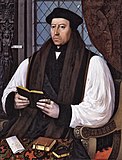Wikipedia:Today's Featured Article

Each day, a summary (roughly 975 characters long) of one of Wikipedia's featured articles (FAs) appears at the top of the Main Page as Today's Featured Article (TFA). The Main Page is viewed about 4.7 million times daily.
TFAs are scheduled by the TFA coordinators: Wehwalt, Dank and Gog the Mild. WP:TFAA displays the current month, with easy navigation to other months. If you notice an error in an upcoming TFA summary, please feel free to fix it yourself; if the mistake is in today's or tomorrow's summary, please leave a message at WP:ERRORS so an administrator can fix it. Articles can be nominated for TFA at the TFA requests page, and articles with a date connection within the next year can be suggested at the TFA pending page. Feel free to bring questions and comments to the TFA talk page, and you can ping all the TFA coordinators by adding "{{@TFA}}" in a signed comment on any talk page.
Featured article candidates (FAC)
Today's featured article (TFA):
- This month's queue
- About Today's featured article
- Recent TFAs and statistics
- Current TFA requests
- Potential TFA requests
- TFA oddities
- Most viewed TFAs
- Featured articles yet to appear as TFA
- Script to track TFA recent changes
Featured article tools:
From today's featured article
The flag of Canada is a red flag with a white square in its centre, featuring a stylized 11-pointed red maple leaf. It has become the predominant and most recognizable national symbol of Canada. It was adopted in 1965 to replace the Union Flag for most official purposes, although the Canadian Red Ensign had also been unofficially used since the 1860s and approved by a 1945 Order in Council. In 1964, Prime Minister Lester B. Pearson appointed a committee to discuss these issues, sparking a serious debate about a flag change. Out of three choices, the maple leaf design by George Stanley, based on the flag of the Royal Military College of Canada, was chosen. It made its first appearance on February 15, 1965, a date now celebrated annually as National Flag of Canada Day. Other flags, usually containing the maple leaf motif in some fashion, have been created for use by Canadian officials, government bodies, and military forces. (Full article...)
From tomorrow's featured article
Thomas Cranmer (2 July 1489 – 21 March 1556) was a leader of the English Reformation and Archbishop of Canterbury. He helped build the case for the annulment of Henry VIII's marriage to Catherine of Aragon. He established the first doctrinal and liturgical structures of the Church of England and published the Exhortation and Litany. When Edward VI was king, Cranmer published the Book of Common Prayer, changed doctrine or discipline in several areas, and promulgated the new doctrines through the Homilies. Upon the accession of Mary I, Cranmer was put on trial for treason and heresy. While imprisoned he made recantations and reconciled himself with the Catholic Church. Mary pushed for his execution, and he was burned at the stake after withdrawing his recantations. Cranmer's death was immortalised in Foxe's Book of Martyrs and his legacy continues through the Book of Common Prayer and the Thirty-Nine Articles. (Full article...)
From the day after tomorrow's featured article

On Her Majesty's Secret Service is the tenth novel and eleventh book in Ian Fleming's James Bond series. First published in 1963, it centres on Bond's search to find Ernst Stavro Blofeld after the events depicted in Thunderball (1961). In the novel, Bond falls in love with Tracy di Vicenzo during the story. The pair marry, but hours afterwards Blofeld and his partner, Irma Bunt, attack them and kill Tracy. Fleming developed Bond's character within the book, showing an emotional side that was not previously present. The novel is one of three Bond stories to deal with the disruption of markets and the economy, in this case Blofeld's planned disruption to the food supply by bioterrorism. The novel received broadly positive reviews. In 1969, the book was adapted as the sixth film in Eon Productions' James Bond film series. It was the only film to star George Lazenby as Bond. (This article is part of a featured topic: Ian Fleming's James Bond novels and short stories.)

